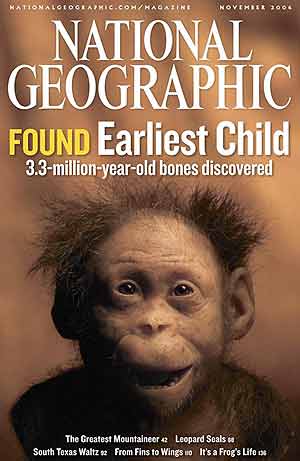The Atlanta Journal-Constitution
Published on: 09/26/06
Unlike many of their human cousins, chimps aren't chumps.
Scientists have learned that chimpanzees don't just ape the behavior of their fellows, but actually learn from watching it. And then they pass down what they've learned as a cultural trait from generation to generation.
As far as scientists know, this ability is unique to chimps and humans —- though chimps' Homo sapiens cousins often learn by trial and painful error.
"Culture depends on learning from others," said Victoria Horner, formerly a primate behaviorist at the University of St. Andrews in Scotland who's now at the Yerkes National Primate Research Center in the piney wilds of Gwinnett County.
She published her findings in the Aug. 28 issue of the Proceedings of the National Academy of Science with co-authors Frans de Waal, Yerkes' longtime top ape expert, and St. Andrews scholar Andrew Whiten.
Great apes, which include humans, chimps, gorillas, orangutans and bonobos, are so prone to copying each other's behavior than the name "ape" has become synonymous with miming. But Horner said this study was groundbreaking because it showed that a chain of six chimps went beyond simple mimicking and "faithfully and accurately transmitted behaviors" to each other exactly, down a line of individuals.
It "shows behaviors can spread within a group and down a chain of animals without human intervention, so the chimps effectively learn from each other," she said. "The behavior does not degrade when passed along a chain. Researchers knew chimps could copy human behavior, but this research shows how they learn and copy from each other."
What this means, Horner said, is that chimps possess one of the critical skills necessary to create and maintain cultural differences between groups, and that their behaviors become traditions.
Horner and her colleagues set up experiments at the primate center in which they trained a chimp to open a small brown box containing fruit in one of two ways —- either by lifting the lid or by sliding a small door.
After the first chimp learned to lift the lid of the box open to get to the fruit, they let another one watch the "teacher" demonstrate the technique several times. After the teacher was removed, the new chimp was brought in. And it went straight to the box, lifted the lid and got the fruit out the same way its teacher had. This went on through six teacher-student generations.
The same experiment was replicated after another "teacher" retrieved the fruit by sliding open the door. Then another chimp was brought in, who learned to get the fruit just like that teacher had. This went on until it was clear that each chimp consistently carried on behavior learned from the one it had a chance to watch. A control group showed researchers that through trial and error they could discover a way into the box, even without a teacher.
It became obvious that the chimps were transferring knowledge through a chain of simulated generations, Horner said, showing for the first time that chimps exhibit generational learning behaviors just like humans do.
"The chimpanzees in this study continued using only the technique they observed, rather than an alternative method," Horner said. "This finding is particularly remarkable considering the chimpanzees in the control group were able to discover both methods through individual exploration."
Such research is important, de Waal said, because chimps are humans' closest cousins, and by learning more about how they learn, it helps us to understand ourselves.
"Everything in human culture was passed down through the generations," de Waal said. "Now we've shown in the chimps that the learning mechanisms needed to have culture are there."
"This tells us that they're darn near as smart as humans. We share 98.4 percent of our genes. It is important to know what makes us special and not so special," de Waal said. "We are looking at them for clues about how we got to be what we are and why we do what we do."
Find this article at:
http://www.ajc.com/news/content/metro/stories/2006/09/26/meshchimps0926a.html


